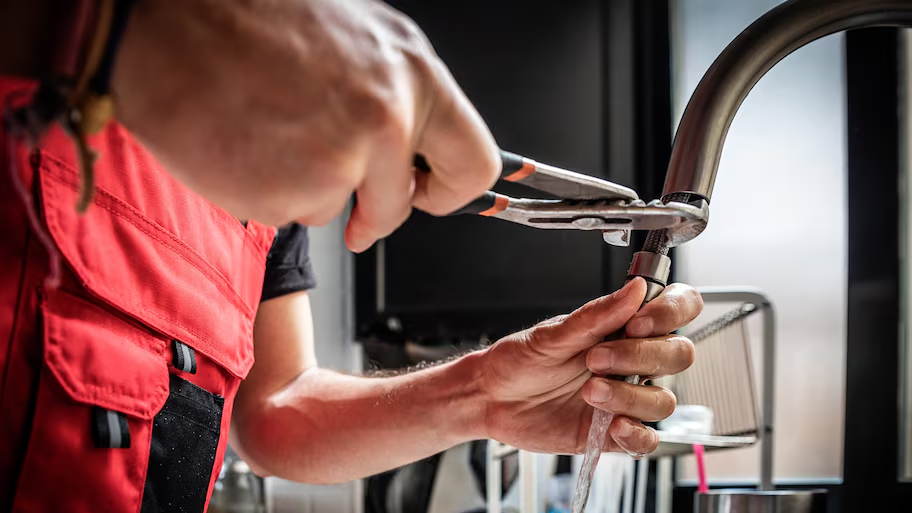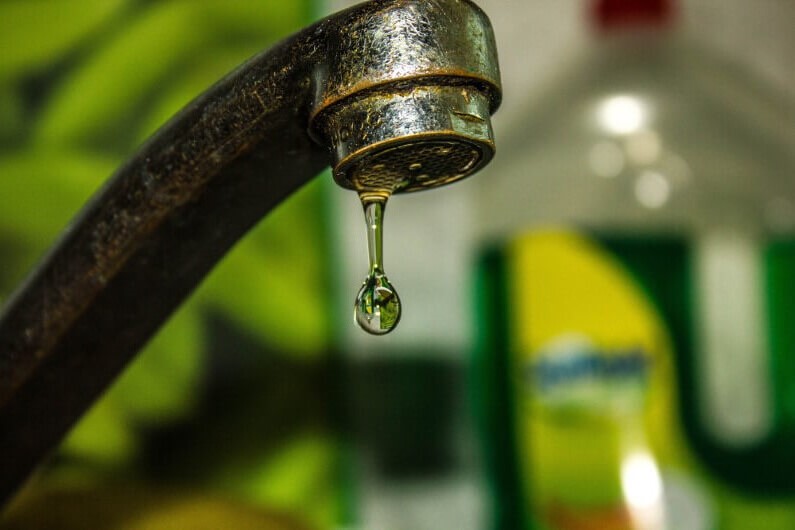Nearly everybody is bound to have their personal conception on the subject of Why Is It Important To Fix Your Leaking Tap/Faucet?.

Leaking faucets could seem like a small trouble, but their impact surpasses simply the annoyance of the audio. From drainage to sustaining unnecessary monetary expenses and health and wellness dangers, overlooking a dripping tap can bring about different consequences. In this short article, we'll delve into why it's essential to resolve this typical household concern quickly and efficiently.
Wastefulness of Water
Ecological Influence
Trickling faucets contribute substantially to water wastefulness. According to the Environmental Protection Agency (EPA), a single faucet leaking at one drip per second can lose more than 3,000 gallons of water annually. This not just strains water resources yet additionally influences ecosystems and wild animals based on them.
Financial Expenses
Increased Water Expenses
Beyond the ecological impact, dripping faucets can inflate water expenses considerably. The collected wastage over time translates into greater utility expenses, which can have been avoided with prompt fixings.
Prospective Home Damage
Moreover, long term trickling can cause damage to fixtures and surface areas surrounding the faucet. Water buildup can create discoloration, deterioration, and even architectural issues if left unattended, causing extra repair service prices.
Health and wellness Concerns
Mold And Mildew and Mildew Development
The consistent visibility of moisture from a dripping faucet produces an ideal environment for mold and mold development. These fungis not only jeopardize interior air top quality but also pose health and wellness threats, specifically for individuals with breathing conditions or allergies.
Waterborne Diseases
Stationary water in dripping taps can become a breeding ground for germs and other virus, boosting the threat of waterborne illness. Contaminants such as Legionella microorganisms flourish in stagnant water, potentially resulting in significant illnesses when consumed or inhaled.
Do it yourself vs. Expert Repair
Advantages and disadvantages of DIY Repair Service
While some may try to repair a leaking tap themselves, DIY repairs feature their own set of challenges. Without correct understanding and devices, DIY efforts can intensify the problem or cause insufficient repairs, extending the issue.
Benefits of Working With a Professional Plumber
Working with a specialist plumber makes certain that the underlying source of the trickling tap is attended to successfully. Plumbing technicians have the expertise and tools to identify and repair tap problems efficiently, conserving time and reducing the risk of additional damages.
Step-by-Step Guide to Repairing a Dripping Tap
Devices Required
Prior to attempting to fix a leaking faucet, collect the necessary devices, including an adjustable wrench, screwdrivers, substitute parts (such as washers or cartridges), and plumber's tape.
Common Tap Issues and Their Solutions
Determine the sort of tap and the particular concern causing the drip. Usual problems consist of damaged washers, rusty valve seats, or malfunctioning O-rings. Describe producer guidelines or on-line tutorials for step-by-step advice on fixings.
Preventive Measures
Regular Upkeep Tips
To stop dripping faucets, do regular upkeep such as cleaning up aerators, checking for leakages, and changing damaged components promptly. Additionally, consider setting up water-saving devices or upgrading to much more efficient fixtures.
Importance of Prompt Repair Works
Attending to leaking faucets as soon as they're noticed protects against more water waste and potential damage, ultimately conserving both water and cash over time.
Influence On Property Worth
Perception of Well-Maintained Residential Property
Keeping a building in good condition, including addressing upkeep problems like leaking faucets, boosts its regarded value and worth amongst prospective buyers or lessees.
Influence on Resale Value
Characteristics with properly maintained plumbing components, including taps, command higher resale worths in the realty market. Attending to trickling faucets can contribute to a favorable impact throughout residential or commercial property evaluations and settlements.
Ecological Duty
Specific Payment to Conservation
Taking duty for fixing dripping taps straightens with wider initiatives towards water preservation and ecological sustainability. Every person's actions collectively make a considerable impact on preserving priceless sources.
Lasting Living Practices
By prioritizing timely repairs and embracing water-saving routines, people add to sustainable living practices that benefit both existing and future generations.
Final thought
Addressing a trickling tap surpasses mere comfort; it's an important action towards conserving water, lowering financial prices, and safeguarding health and wellness and residential or commercial property. Whether with do it yourself fixings or professional help, doing something about it to fix dripping faucets is a small yet impactful way to promote responsible stewardship of sources and add to a much healthier, extra lasting future.
How to Fix a Leaky Faucet: Step-by-Step Repair Guide
A leaky faucet may seem like a simple annoyance, but if it's not fixed promptly, that leak could cost hundreds to potentially thousands. From water damage to mold, mildew, and high water bills, even a tiny leak can be catastrophic if left unattended. Damage like this can even affect the overall value of your home, so it's important to take the right approach for leaky faucet repair. You may need the help of a plumber in some cases, but we've got a few tips you can try on how to fix a leaky faucet before calling the pros.
Four Faucet Types
When you're learning how to fix a leaky faucet, the first step is knowing what kind of faucet you're working with! There are four common types.
Cartridge Faucets
Cartridge faucets come in one- or two-handled varieties. In one-handled cartridge faucets, hot and cold water combines in a single cartridge. In the two-handled versions, hot and cold water are controlled separately and mixed in the faucet.
Ball Faucets
Ball faucets have a single lever you push up and down to adjust the pressure and rotate to change the temperature. A slotted metal ball controls the amount of water allowed into the spout.
Compression Washer Faucets
They're the oldest type of faucet, but they're still used in many homes — especially older ones. Compression faucets have two separate handles that, when turned, raise or lower the washer that seals a water valve. This valve stops water from flowing through the faucet when it is turned off.
Disc Faucets
Disc faucets rarely need to be repaired due to their maintenance-free design. The water flow is controlled by two discs — the upper one raises and lowers against a fixed lower disc, creating a watertight seal. If your disc faucet starts leaking, you may need to replace the seals or clean residue buildup from the inlets.
Fixing a Leaky Faucet
Step 1: Turn Off the Water
Whether you're learning how to fix a leaky bathtub faucet or how to fix a leaky kitchen faucet, always turn off the water supply to your working area when you're fixing a leak. The last thing you want is a flood added to your list of things to fix.
Look for the shutoff valves below your sink or around the tub and turn them clockwise to stop the water flow. If your faucet doesn't have shutoff valves, you may need to turn off the water for the whole house. Check to make sure it's off by turning the faucet on. If nothing comes out, you're ready to start the repair.
Step 2: Take Apart the Faucet
How you disassemble your faucet depends on the type of fixture you have. You can use a flathead screwdriver to remove the caps on top of the handle or handles for cartridge and compression faucets. Inside, you should see handle screws. Unscrew these with a screwdriver to remove the handle.
Disc- and ball-style faucets will typically have an inlet screw near the handle, and removing that will reveal the interior of the faucet.
Detach the Valve Stem
For cartridge- and compression-style faucets, you'll see the inner valve stem or cartridge once you remove the faucet handles. If you have a compression faucet, unscrew the brass valve stem. If you have a cartridge faucet, pull out the cartridge. If your cartridge has been in place for a while, it may require some tools or extra force to remove it due to mineral deposits.
Examine and Replace Parts
Once you've removed the parts, check them out to confirm what needs to be replaced. You may see corroded rubber washers, O-rings, stems, or cartridges. On a ball-style faucet, check the seats and springs for damage.
If you need to repair a leaky disc faucet, check the inlet and seals on the lower disc.
Once you determine what parts must be replaced, visit your local hardware store. Bring the damaged parts with you to ensure you can purchase the correct components to replace them.
Clean Valves and Faucet Cavity
If you've removed a stem or cartridge, you may notice mineral buildup in the faucet's threads. Use white vinegar to clean the valve seat by soaking it for a few minutes, then scrub it away with a soft toothbrush and rinse with warm water. You can also clean the interior of the faucet in the same way.
Reassemble the Faucet
Once your faucet is cleaned and the required parts have been replaced, it's time to reassemble it. Put the pieces back together and slowly turn the water supply back on. Doing this slowly is crucial because too much initial water pressure can damage the new hardware you've just installed.
https://homewarranty.firstam.com/blog/how-to-fix-leaky-faucet

I discovered that article about while doing a lookup on the internet. Enjoyed reading our content? Please quickly share it. Help someone else discover it. We truly appreciate your readership.